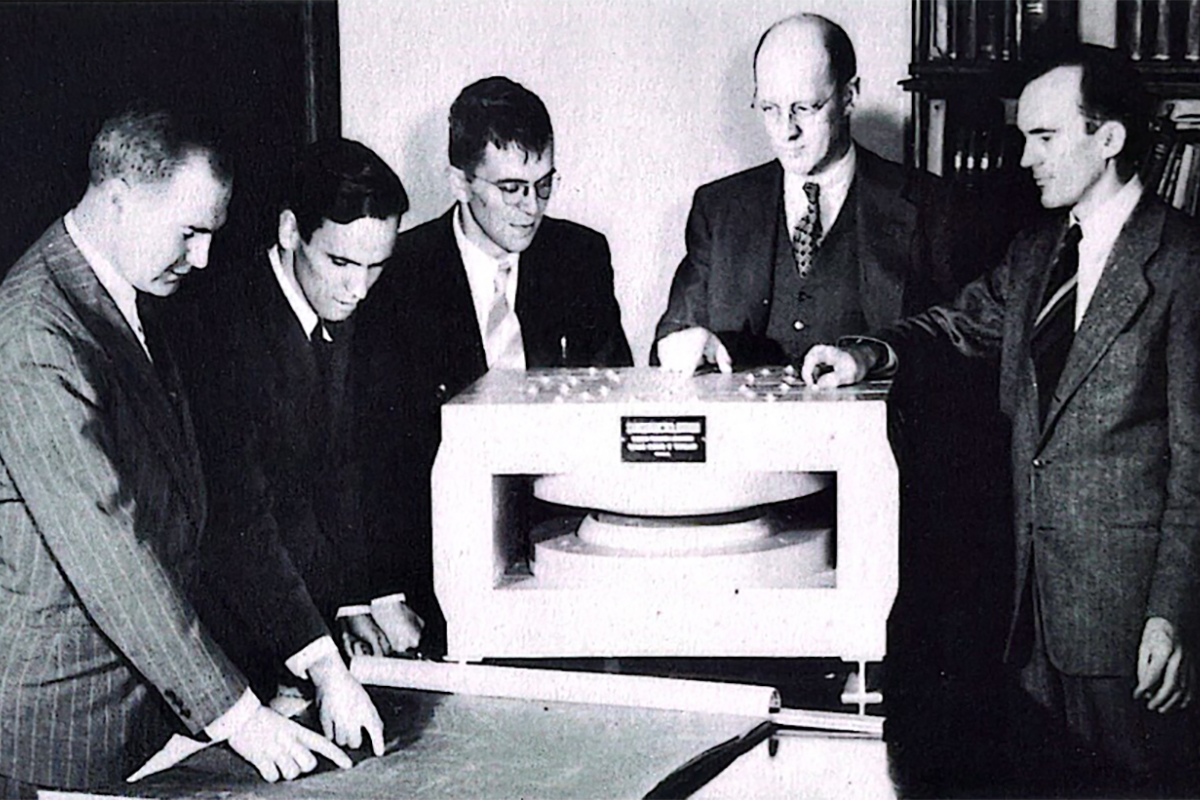
(Left to right) Dr. Edward C. Creutz, Dr. John G. Fox, Dr. Martyn Foss, Dr. Frederick Seitz, and Dr. Roger B. Sutton of the Physics Department discuss plans for the synchrocyclotron. Wooden model, 1/12 scale of the proposed device, is the center of interest.
From its earliest days, Carnegie Mellon University has pushed the boundaries of innovative research. The University Archives documents more than 100 years of groundbreaking and exciting CMU history — including photos, annual reports, correspondence, and other records showcasing the then-Carnegie Institute of Technology’s Nuclear Research Center, featuring a synchrocyclotron. This year, 2023, marks the 75th year since builders broke ground on this historic particle accelerator.
During and immediately after World War II, nuclear research in the United States was booming, and the Carnegie Institute of Technology — with the help of funding from the Atomic Energy Commission and Office of Naval Research— developed a nuclear physics program to progress this research further. In 1946, the school allocated money for a nuclear particle accelerator, and a grant from the Buhl Foundation opened more scientific possibilities.
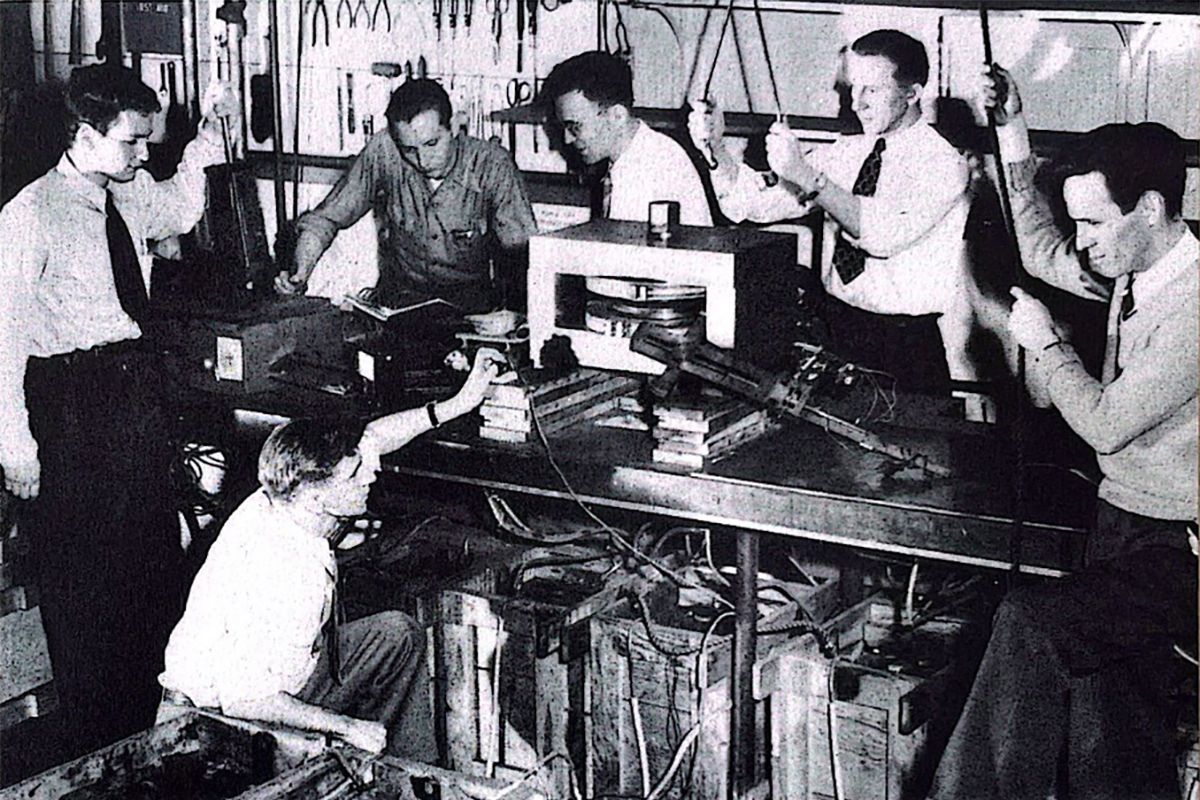
In the 1940s, there were several tools in and around Pittsburgh that could be used to study the atom. An electrostatic generator, which could produce four million volts, operated in East Pittsburgh. The University of Pittsburgh had a cyclotron — one of about 50 total around the world — that operated at around 20 million volts and could produce high nuclear particle energies. A cooperative program with Pitt allowed Carnegie Tech researchers and students access.
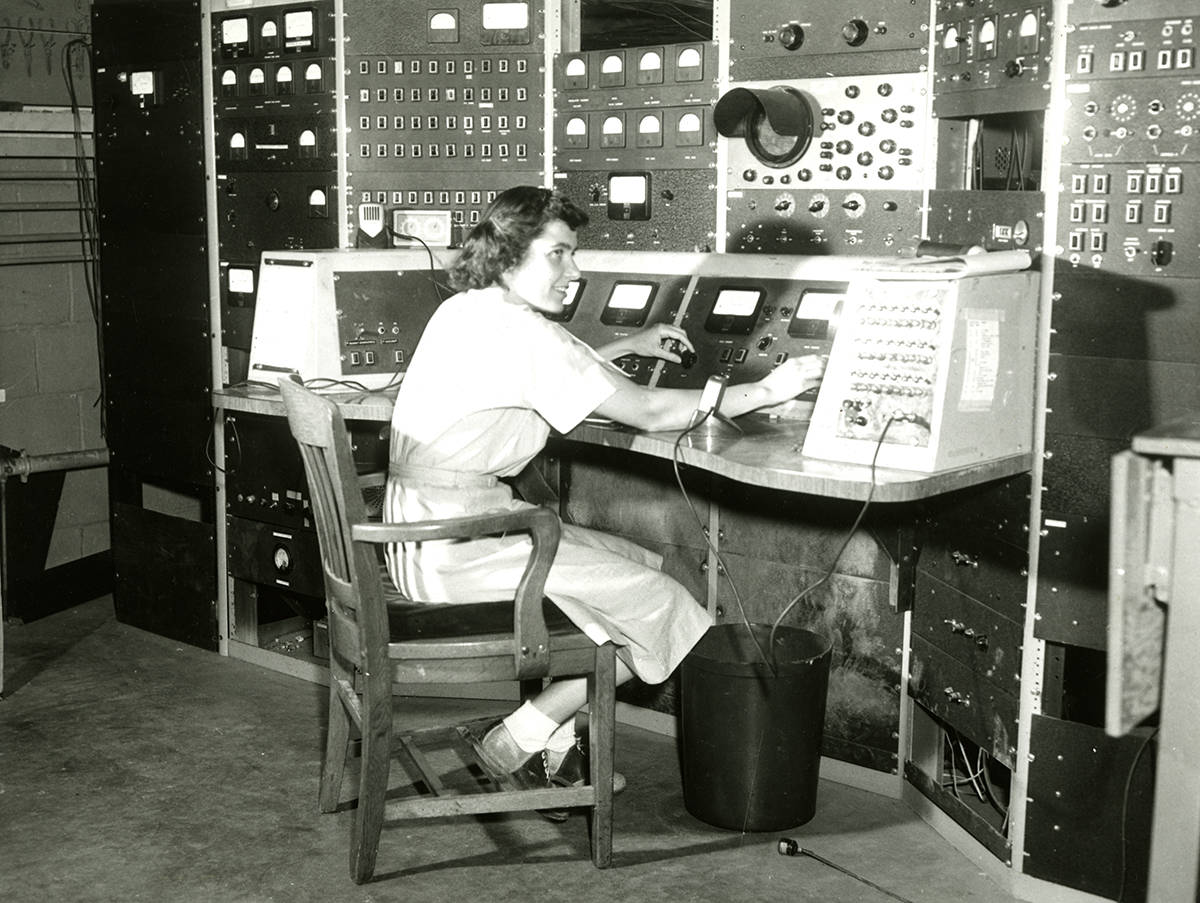
Researchers at Carnegie Tech wanted something more powerful — an instrument capable of studying the internal structure of a nucleus by examining the meson particles that hold protons and neutrons together. The school made plans for a synchrocyclotron, which could produce the hundreds of millions of volts required for that research.
A synchrocyclotron consists of several key parts: a huge steel electromagnet; two steel poles inside the magnet, one hanging from the top and the other rising from the bottom; two tips atop the poles; two copper coils that fit like rings around the poles; and a D-shaped mechanism inside a 10-sided vacuum tank, which fit in the space between the pole tips. While building its machine, Carnegie Tech also researched ways to improve the design. Researchers were able to dramatically increase the efficiency of the device. While early designs called for a 650-ton magnet capable of producing protons with energies of around 100 million electronvolts, the final product was a 1,500-ton magnet capable of producing 400 million electronvolts.
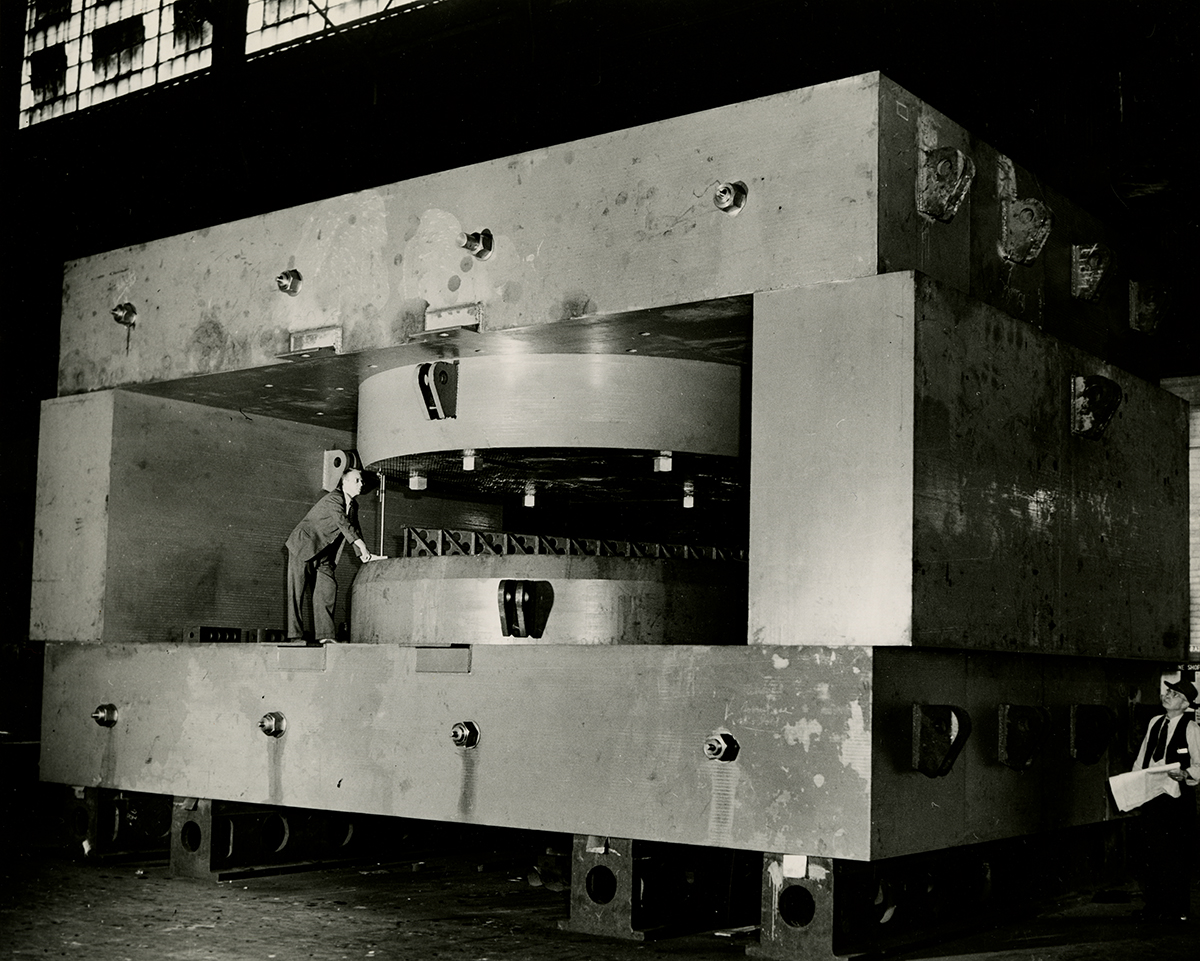
The initial plan was to build the particle accelerator on campus, but as the program grew, it became clear that an off-site location would allow for future expansion. The school selected 60 acres of the Westinghouse Electric Corp. property in Saxonburg, Pennsylvania, which was a former KDKA transmitting station area. Carnegie Institute of Technology President Robert. E. Doherty broke ground for the Nuclear Research Center on March 12, 1948.
In order to focus the proton beam being accelerated, pieces of the machine had to be incredibly precise to shape the magnetic field. Transporting certain pieces, which were constructed at the New York Shipyard, was one of the most complicated parts of the building process. Each of the copper coils weighed about 96 tons, and they had to be taken from Brooklyn, New York, to Saxonburg. When the coils failed to secure highway clearance, they traveled by ship down the East Coast, through the Gulf of Mexico to New Orleans, and then by river barge up the Mississippi, Ohio, and Allegheny rivers.
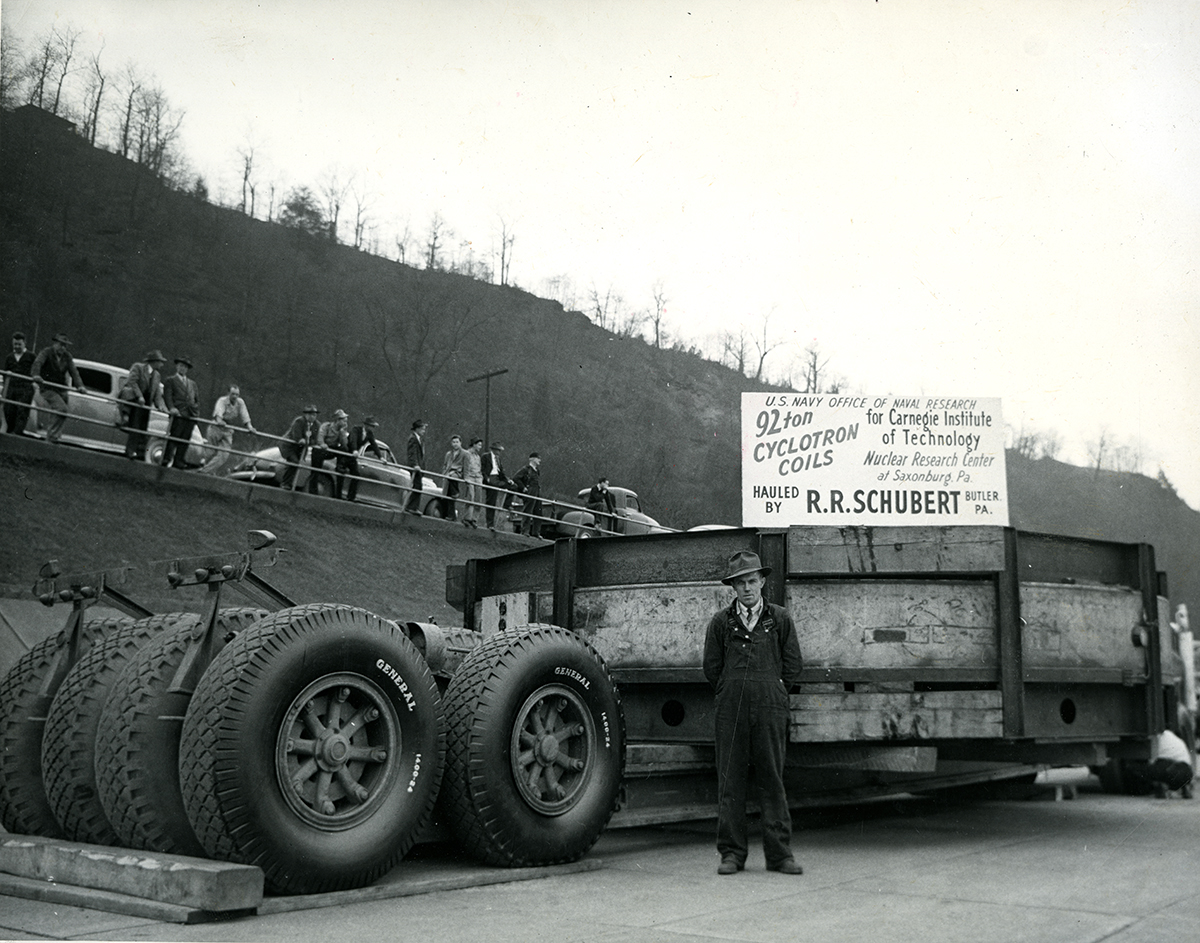
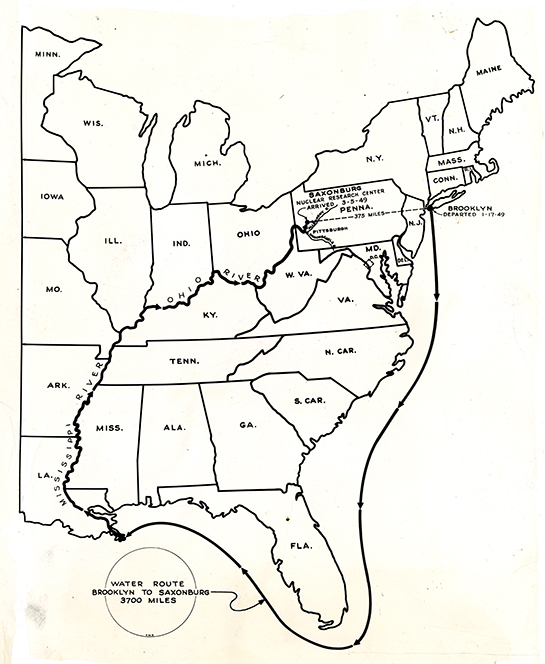 Though the distance between the shipyard and the research center was only 375 miles, the coils’ journey equaled about 3,700 miles.
Though the distance between the shipyard and the research center was only 375 miles, the coils’ journey equaled about 3,700 miles.
In addition to the synchrocyclotron, the Nuclear Research Center contained labs for other kinds of physics research, including low temperature work with liquid hydrogen and helium. The Department of Chemistry also had space that included a “hot lab” equipped with remote handling equipment to carry out chemical processes with radioactive materials.
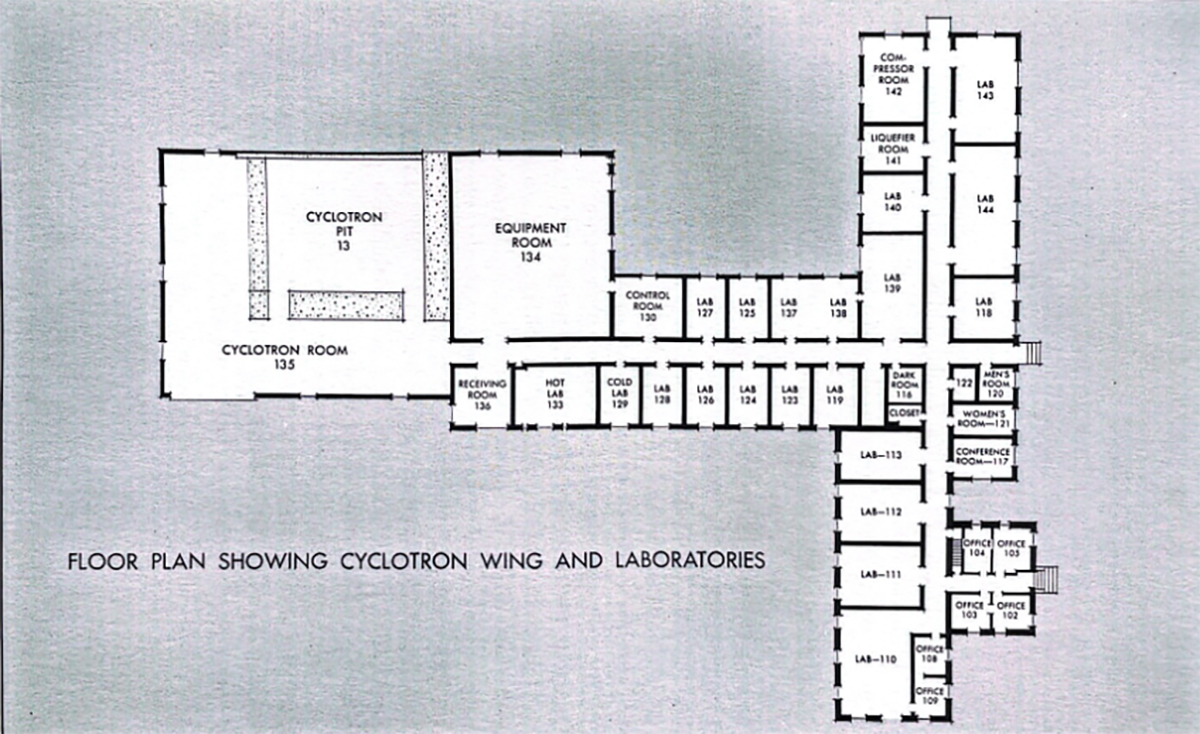
At the time it was built, the synchrocyclotron was one of the two highest-energy accelerators in operation. As technology evolved and more modern facilities were built elsewhere, the facility was eventually decommissioned. Today, Carnegie Mellon conducts high-energy research through collaborations around the world. In addition to the Large Hadron Collider at CERN in Switzerland, faculty conduct research at facilities such as the Belle II detector in Japan and the COHERENT experiment at Oak Ridge National Laboratory in Tennessee.
Since the 1940s, Carnegie Mellon has continuously received federal funding for this high-energy research. Most recently, the Department of Energy (DOE) awarded 12 Department of Physics faculty members a $4.98M grant to investigate the fundamental building blocks of matter and their interactions in what is known as the standard model of particle physics.
The original model of the cyclotron (at 1/12 of the actual size) is on display in the mezzanine on Level A of Doherty Hall. To view additional materials about the Carnegie Tech synchrocyclotron, or the research papers of some of CMU’s notable physicists, contact the Archives to schedule an appointment, or visit during drop-in hours on Thursdays 10:00 a.m. – 4:00 p.m. during the semester (see here for up-to-date hours).
by Sarah Bender, Communications Coordinator
